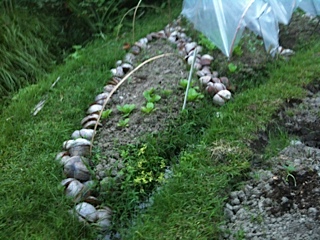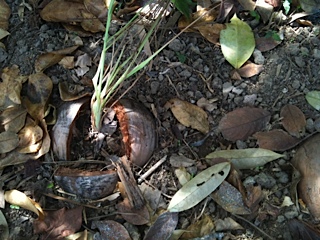Indigenous Micro Organisms (IMO)
/Indiginous Mirco Organisms
Here at #JiwaDamai we are creating our own #microorganisms. A #bamboo is split in half ad filled with cooked rice. Then it is closed, but not too tightly, and buried close to growing bamboo. After 10 days it is dug out and opened. One can see the fine fungus which has grown and represents the organisms. Now sugar and water are added, covered and placed in a dark place with water to grow and multiply. After five days the brew is ready to be distributed in the garden. It should have a nice earthy smell. This brew nourishes the roots and can be sprayed on the leaves as well.
This new concoction is becoming increasingly popular among farmers. Usually called indigenous microorganisms (IMO), this concoction has been successfully tried by government agriculturists, academic researchers and non-profit foundations alike. They have found it useful in removing bad odors from animal wastes, hastening composting, and contributing to crops’ general health.
To make your own IMO, follow these simple steps:
1. Cook a kilo of rice, preferably organic. After cooling, put the cooked rice in a bamboo, wooden, earthen or ceramic container. Avoid plastic or aluminum.
2. Cover the mouth of the container completely with cloth or paper, fixed in place with a rubber band, to prevent water or small insects from getting in.
3. Put the covered container, protected from possible rain, under the trees, in a bamboo grove, a forest floor, or wherever a thick mat of leaves has formed. Leave it there for three days.
4. After whitish moldy filaments have formed, transfer the entire contents of the container to a larger glass or earthen jar and add one kilo of brown sugar or molasses, preferably organic.
5. Cover the jar with clean cloth or paper, fixed with a rubber band. Keep the jar in a dark, cool place. Let it ferment for seven days, until it appears muddy. This is your IMO concoction.
To use, mix two spoonfuls of the concoction with a liter of water. Spray the diluted solution around chicken coops and pig pens to remove unpleasant odors, on your compost pile to hasten decomposition, or on your crops to improve their general health by controlling pests and serving as folia fertilizer.
By making their own IMO, farmers can free themselves from the need to buy inputs for their farms. By reducing their costs, using IMO keeps them away from debt and improves their income.
Another one of our much used #natural #fertilizer is the compost tea. Our very fine compost is placed in a bucket with water and oxygenated and aerated with a small pump for 26 hours. After which the tea is sprayed on plants and earth.









